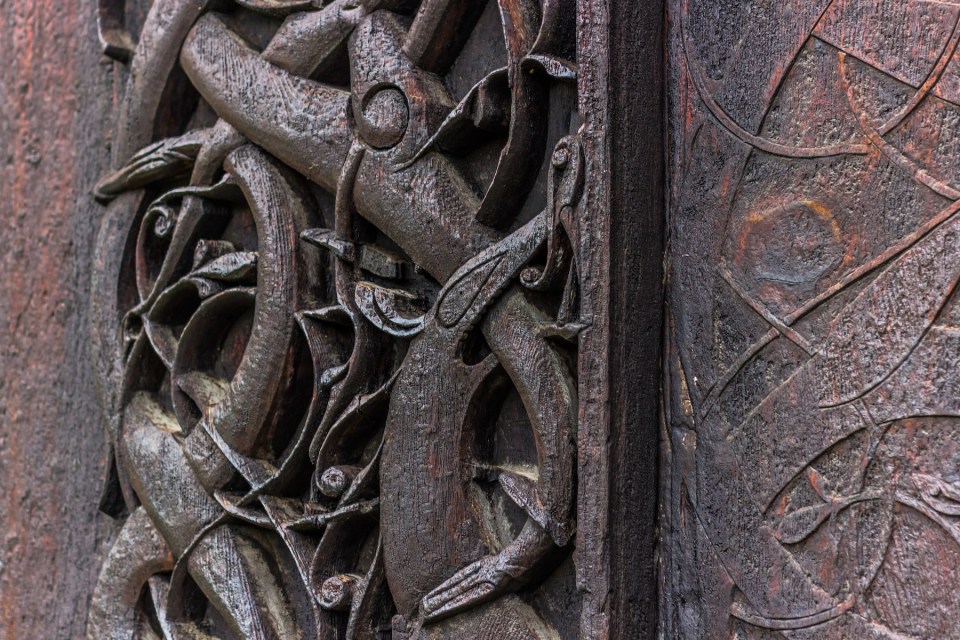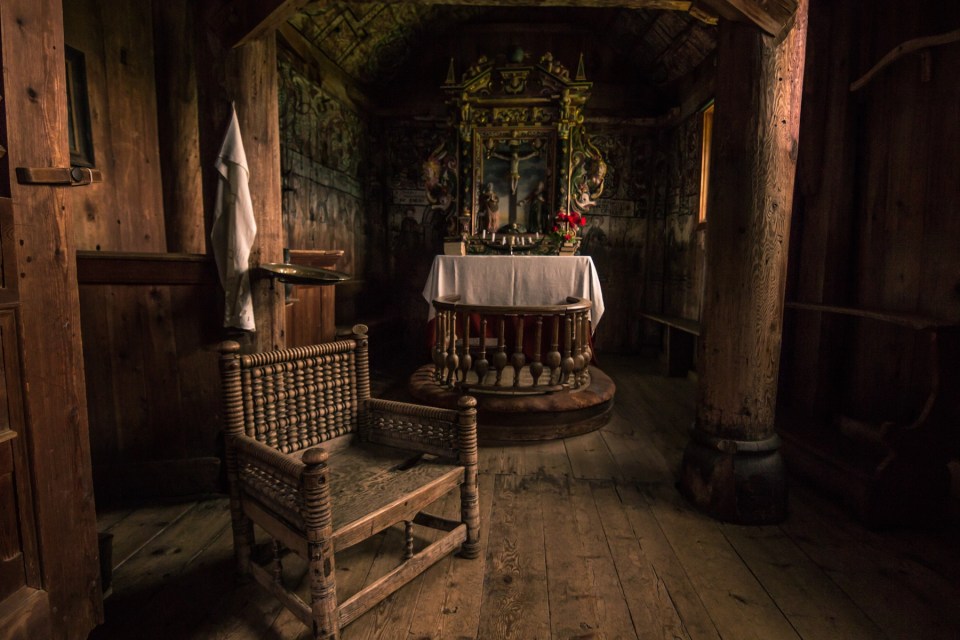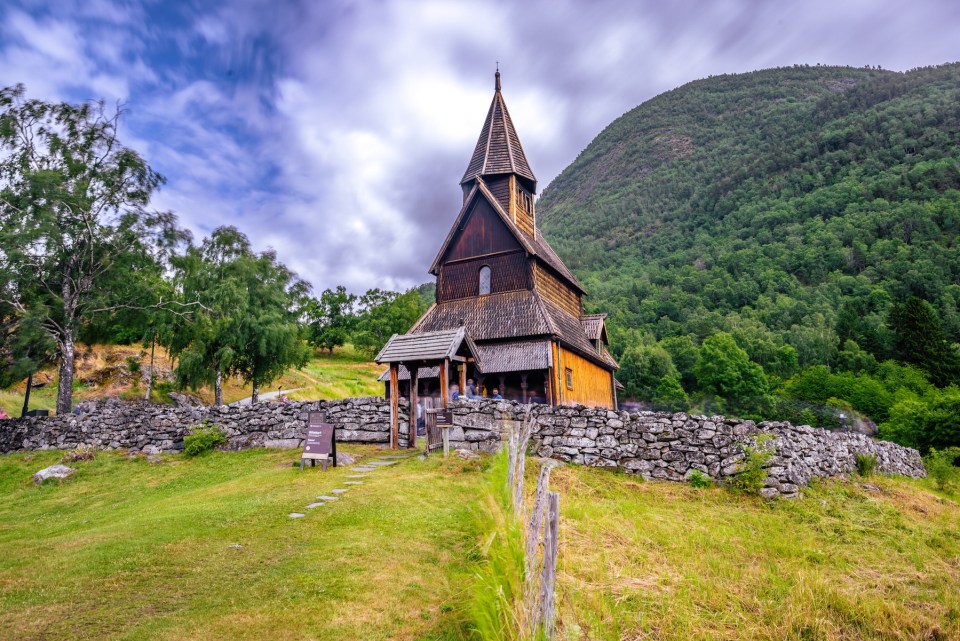In the 12th century, a group of Christians built an ornate wooden church in Luster, Norway, adorned with carvings that fused Norse and Christian symbolism. Nearly 900 years later, the Urnes Stave Church still stands on the shores of the placid Lustrafjord. The Urnes Stave Church is Norway‘s oldest stave church— a wooden church constructed using beams that fit together seamlessly.
Ornes, Norway – July 4th, 2023: The Urnes stave Church in the village of Ornes. A UNESCO world heritage site
Photo by depositphotos.com
The Urnes Stave Church features several structural innovations passed down from Viking culture, such as a roof that looks as though it is covered in wooden fish scales. The scaled design prevents snow from piling up during Norway’s frigid winters.
Modern architects are in awe of the fact that the builders of the Urnes Stave Church— and other stave churches like it— did not use a single nail. 12th-century Norwegian craftsmen used an intricate system of wooden beams and posts made from tall, limbless trees that were trimmed to grow in the shape of a column. These building techniques were perfected by Vikings who built massive ships constructed to withstand powerful waves.
The most impressive aspect of the Urnes Stave Church is the intricate wood carvings. The exterior of the church features a carving of a long-necked dragon fighting with a lion-like creature. Some historians believe that the lion-like creature is Christ, and the dragon-like creature is the devil. Norse scholars speculate that some of the dragon-like creatures are actually serpents and that the carving depicts a Viking legend about an epic battle between powerful gods.

Detail of the wall of the Urnes Stave Church
Photo by depositphotos.com
The interior of the Urnes Stave Church is adorned with Christian imagery, such as a wooden carving of Christ on the cross. The woodwork is so impressive that the Urnes Stave Church has been a UNESCO World Heritage site since 1979.

Details inside Urnes Stave Church, UNESCO site, in Ornes, Norway
Photo by depositphotos.com
From early May through late September, visitors can pay a small fee to tour the interior of the Urnes Stave Church. An elaborate altar with a 12th-century candlestick holder shaped like a Viking ship is one of the grand highlights. The candelabra holds nine candles. Nine was a sacred number in Viking culture in honor of the nine deities that survived Ragnarok— a…
Click Here to Read the Full Original Article at Unusual Places…
